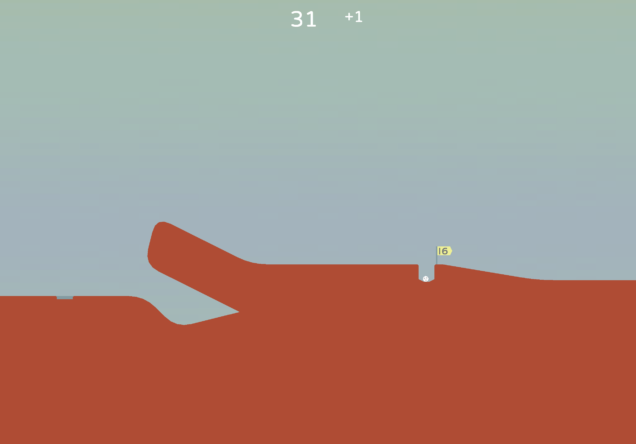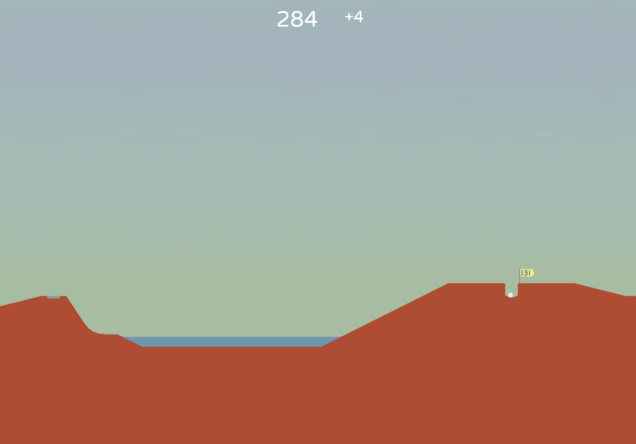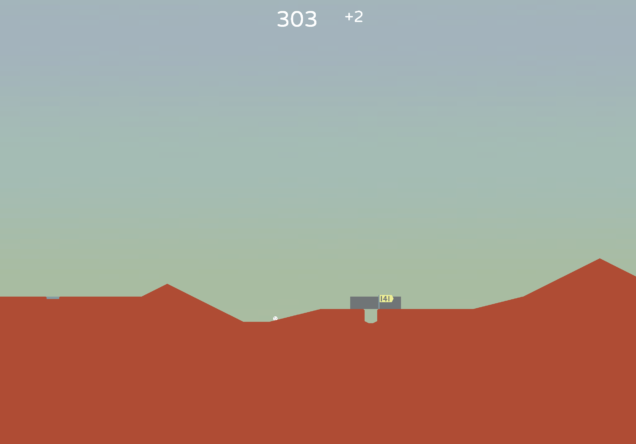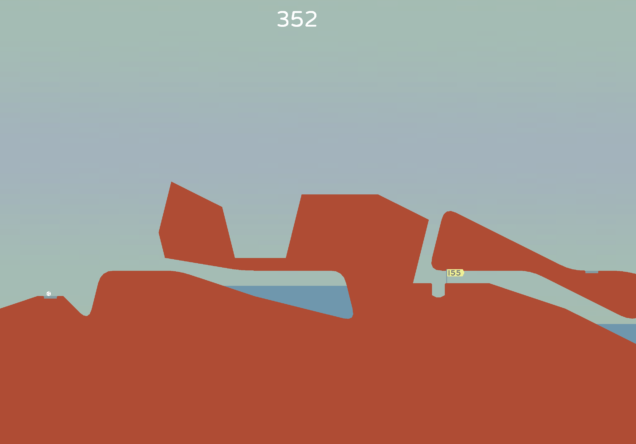Did Desert Golfing need a sequel? Does Death of the Author apply to a desk toy? Am I reading too much into this? Read on to find out!
Mechanically and stylistically, Golf on Mars is quite similar to Desert Golfing. An endless desert, a golf ball propelled by a touch, and the occasional background item that breaks up the monotony.
Just under the surface level detail, however, there are a variety of changes. You can impart spin on your golf ball, making certain shots much easier if you know how to handle them. The desert on Mars is random and curvy, unlike the static set of 10,000 polygonal levels in the first game. There’s a game menu. You can skip a hole (which is occasionally necessary now) if it takes more than 25 strokes. Water is now a new environment, rather than instant death. The ground of Mars is more like hard dirt than sand – perhaps an impact of spin as a mechanic, perhaps as a deliberate choice. I’m tempted to suggest the gravity has been tweaked up a tad as well, but that may just be my expectation that the gravity would be lower on Mars.
Finally, perhaps the biggest change of all: your golf ball no longer rolls off the screen. Yes, indeed, while there are still occasional endless pits, you’re no longer doomed if the ball rolls just a bit too far in one direction, as the screen scrolls to compensate. This means there are far fewer resets, and every shot will likely be from a new position. This significantly reduces the frustration you experience over time and entirely changes the feel of the game. Early on, I found myself still trying to avoid the edges of the screen – to my significant detriment.
These mechanical changes make me question my assessment of the original game. I had originally thought, due to the premise of golfing in an infinite sand trap, that the intent of the game was to provide an experience with a strange combination of relaxation and frustration. But here in Golf on Mars, many of the components that tinged the original experience with frustration have been sanded over and streamlined – even the tantalizingly far away goal of a possible “end” seems to have been removed (though perhaps only seems). In the end, perhaps my opinion of the original’s lesson – to accept frustration as temporary and ephemeral – was not the author’s intent; nevertheless, that’s what I got from it anyway.
Does all this make Golf on Mars a better or worse game? It certainly makes it a different game – less frustrating and thus less enticing to me, oddly enough. For now it goes to Tier Two since for the most part it is just more Desert Golfing and I’ll still be playing it during boring meetings.



